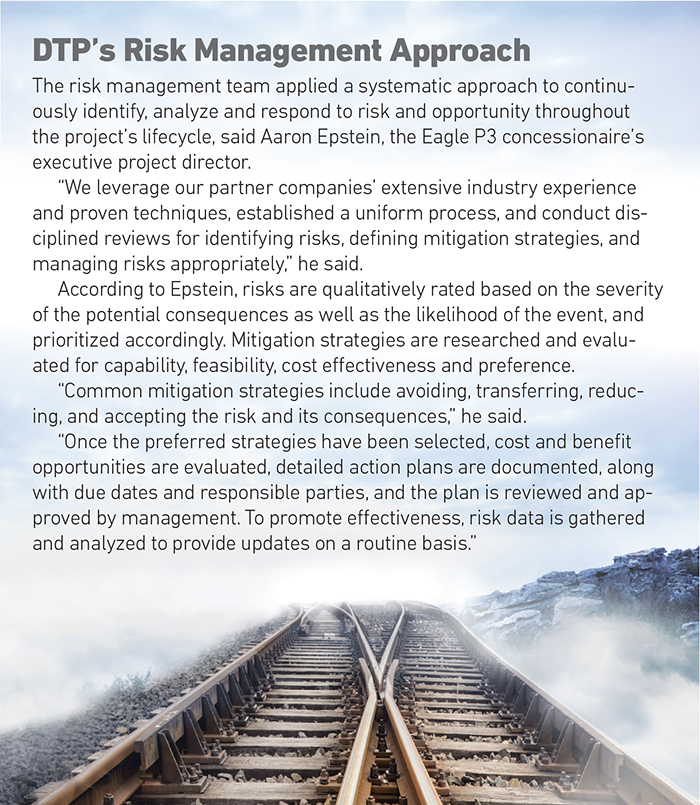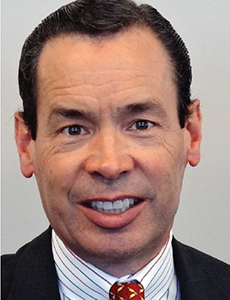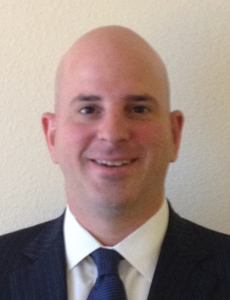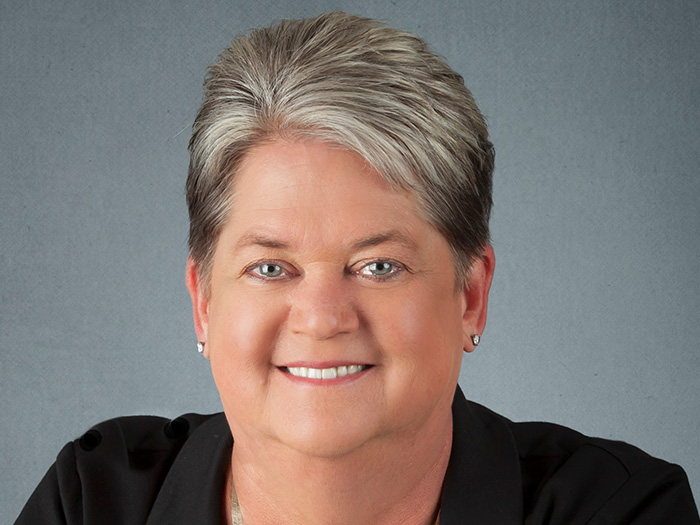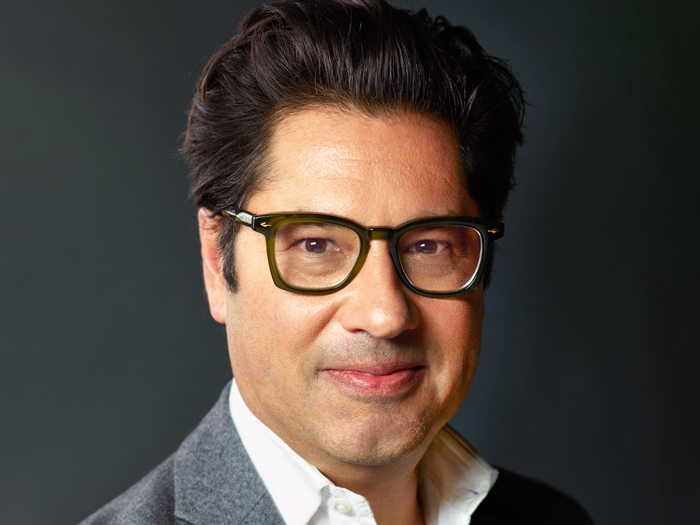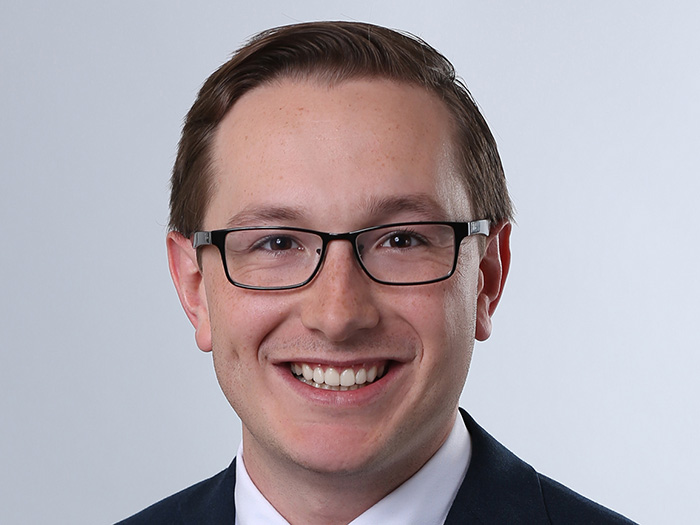Construction Challenges
Owning the Risk
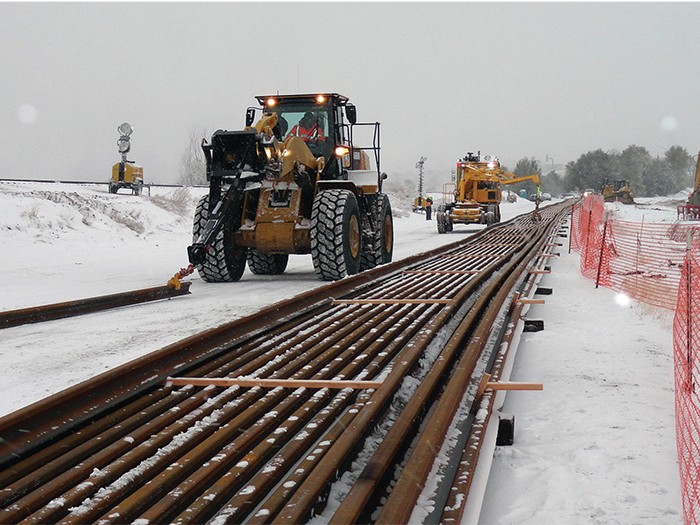
Denver’s Eagle P3 project is ambitious not only in its scope and structure, but in its approach to risk and insurance.
The $2.2 billion project links Denver’s airport, downtown and metropolitan areas with three new commuter rail lines, which are due to open in 2016, as part of the Regional Transportation District’s (RTD) ‘FasTracks’ infrastructure expansion. The project is unusual from an insurance perspective in that the RTD opted to assume control of the insurance program and participate in the safety program.
Owner-controlled insurance programs (OCIPs) were more rare back in 2011, said Don Holmes, Denver head and managing director of the construction practice for RTD’s broker Marsh.
Public entities would typically defer such responsibilities to the project concessionaire. However, the approach is growing in popularity, thanks in part to the success of Eagle P3.
“Investors and lenders asked lots of questions in order to get comfortable with how the coverage would work, and if we’d given the wrong answers there could have been a great deal of resistance,” Holmes said.
“But the client was doing it for the right reasons.”
Without the public entity controlling the insurance program, some of the contractors on the project could not have secured high enough general liability or workers’ compensation insurance limits to participate. But by creating a program greater than the sum of its parts, RTD was able to serve the community by offering contracts to a broad range of regional companies.
The selected concessionaire, Denver Transit Partners (DTP), is a partnership owned by lead constructor and designer Fluor Enterprises, Denver Rail (Eagle) Holdings — a unit of John Laing PLC and an investment arm of Aberdeen Global Infrastructure Partners.
The concession group is complemented by a host of supporting contractors.
It was essential prospective underwriters on the project fully understood its structure, funding and safety program. Marsh conducted an extensive risk assessment of all six FasTracks corridors prior to structuring the Eagle P3 insurance program.
This information was shared with bidders on the project, while RTD engineers took the underwriters on extensive tours of the rail corridor — a transparent approach that undoubtedly contributed to every prospective insurer submitting a quote to participate.
“I give RTD a lot of credit — not every client invests in that kind of analysis pursuant to placing an insurance program,” said Holmes, who admits the biggest challenge was to meet the needs of a great number of stakeholders.
“The challenge is convincing markets the risk is well managed. We succeeded in this and achieved very good pricing, and the program has responded well.” — Don Holmes, managing director, Marsh
“There are so many competing interests in a PPP. We had to establish provisions regarding escalation of payments and commercial invalidation of insurance, because we would be living with what we committed to for a very long time and we needed to get it right,” he said.
“That took a great deal of time, effort and conversation.”
Zurich won the role of lead underwriter for the casualty, general and excess liability and workers’ compensation wrap-up, while the first party builder’s risks are led by Liberty International Underwriters (LIU).
Additional underwriters participate in excess layers across the program.
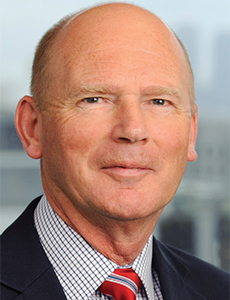
Paul Hampshire, vice president, engineering and civil construction, Liberty International Underwriters
“We felt the quality of the client, the way they had procured their P3 concession, their overall approach and the caliber of the design and construction concession team were very favorable,” said Paul Hampshire, vice president of engineering and civil construction at LIU, which also assumed responsibility for construction risk engineering.
“We like to be considered an extended part of the project delivery team, albeit at arm’s length,” said Hampshire.
“We are not there to audit; we are there to add value, because insurer and insured have aligned interests — we both want the project to be a success.”
But, he added, “there is a small but significant difference between risk management and the management of risk, which sits 100 percent with the concession team of designers and constructors, through to maintenance and operations, who are fully responsible for the management of risk as they see fit — we don’t own their risk, they do.”
Delegating Risk Management
Loss control on a project of this nature is a true team effort. RTD chose to oversee this element, employing its own loss control engineer to work closely with Marsh across the OCIP program and with LIU on construction risks.
According to DTP’s executive project director Aaron Epstein, the contractors and sponsors of the project partnered to allocate risks among the parties best equipped to mitigate potential exposures.
“On a quarterly basis, management formally reviews the outstanding risks and revises the risk framework to ensure all potential risks to the project are identified and mitigated,” he said.
Epstein noted it is important participants understand all risks up-front during the development phase of the project in order to structure the team in the best manner possible; and that risk analysis is updated on a consistent and frequent basis to keep abreast of any new risks that may arise.
Hampshire added that on projects of this scale, underwriters prefer to work with concessions that have worked together previously “so they are not on a learning curve, discovering how each other work while trying to deliver to intense timelines.”
It should also be noted, he said, that contractors have been hired for requisite experience and skill rather than on price, and that there is adequate time and budget in the project schedule to ensure the project is completed to the right standard.
Holmes admitted that driving loss control by committee can sometimes raise concerns over who is controlling what, “but our loss control engineers performed exceptionally well,” he said.
Bumps on the Track
Construction on the project revolves primarily around station upgrades, drainage work and the interaction of railroads with utilities, communities and existing structures across 36 miles of rail corridor.
“Coordination with the local communities, cities and counties, as well as the two freight railroads we are in close proximity to, is one of our major focuses,” said Epstein.
Working with third parties who have had to adapt their own facilities to accommodate the railroad has been a “headache,” said Hampshire, and caused several delays — in some cases requiring the project’s critical timeline to be sliced into sub-activities, and gaps left in infrastructure, to avoid project-wide delays.
There are also environmental considerations, such as dredging up polluted spoils from under old rail tracks.
“The key for the client is for policies to have broad wordings and not be too specific,” said Holmes.
“The challenge is convincing markets the risk is well managed. We succeeded in this and achieved very good pricing, and the program has responded well.”
However, Hampshire said there was “a wide range of issues, from technical to natural catastrophe to day-to-day security and control,” to contend with on the project — to which Liberty’s claims team reacted “proactively.”
Heavier than expected rainfall, for example, caused flood damage to the train maintenance facility as well as isolated incidents along the rail corridor. Then there was the decision by the concession team to demolish and rebuild a number of bridges they constructed, having decided they were not fit for purpose and would cost more to repair than rebuild, as well as some theft of plant and equipment.
“Certainly we have faced some issues, just as all projects do,” said Epstein.
“The important thing is that our internal processes have allowed us to identify these issues early and correct them before they turned into major setbacks.”
And the project has indeed so far achieved that rare feat of being on time and on budget.
“Performance has been splendid and I’m very proud of our work and that of RTD’s risk manager Bob Medina,” said Holmes.
“Safety and engineering has been excellent and I’m not aware of any major claims.”
Hampshire said that P3 projects, having briefly fallen out of political favor, will become more prevalent due to increased demand for infrastructure in the U.S., coupled with a challenging funding environment. His concern, however, is a potential lack of experienced teams to deliver them.
“PPP projects are big, ugly and risky. Everyone involved needs to understand what the risks are — and that’s not always the case.”
But having glided smoothly towards completion, Eagle P3’s risk approach may prove to be a prototype for others to follow.